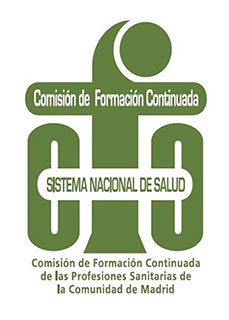Course on Data Management and Analysis with SPSS for Health Professionals (Basic level)

Take on statistics thanks to the SPSS program
The need to learn to handle health data matrices with updated statistical software requires basic knowledge of computer science, information management and statistics that are not usually the subject of regulated university education. And it is necessary to continuously adapt professionals with these tools in order to apply them in their jobs.
The continuous updating of the SPSS versions that incorporate new functionalities and techniques for the treatment and analysis of data make it necessary to review both statistical and user knowledge of the software for its optimum use. Both in the formal and interpretive aspects and accessing all corners of the program accessible to professionals with basic-user level computer skills.
Curriculum
Data Management and Analysis with SPSS for Health Professionals (Basic level)
- Session 1: Work environment with SPSS.
- Session 2: Program configuration, menu structure and Help.
- Session 3: Managing and modifying data files.
- Session 4: Management and modification of variables.
- Session 5: Descriptive statistics of variables. Editing of graphs and tables.
- Session 6: Compare averages and 1-way ANOVA.
- Session 7: Covariation between variables: correlation and regression.
- Session 8: Contingency tables: Risk, Cohen's Kapa, McNemar, Chi square.
- Session 9: Alternatives if the application conditions are not met.
- Session 10: Power Analysis and Sample Measurement.
Professors
 Juan Martín Aliaga Ugarte
Professor
Juan Martín Aliaga Ugarte
Professor
More Academic Info
Aimed at:
Competences
At the end of the course, the medical professional student will acquire the minimum knowledge and skills to:
- 1. Configure and adapt the SPSS work environment to their work needs and to manage the security of work sessions.
- 2. Enter, obtain and export data from different sources and in the various and most frequent digital formats on the market and those requested by being involved in their work tasks.
- 3. Manage data matrices transforming them according to analysis needs.
- 4. Manage all kinds of variables, including calculations, recoding, counts.
- 5. At the end of the course, the student will be able to establish which is the appropriate statistical test for the different objectives proposed by applying descriptive statistics and univariate and bivariate inferential statistics with SPSS.
- 6. Interpret the results obtained with SPSS for each of the problems raised.
Objectives
- 1. Provide healthcare professionals with the necessary computer skills to use the SPSS statistical package.
- 2. Provide the necessary knowledge to manage both the data files and the data itself with SPSS.
- 3. Learn to apply basic statistical methods to each particular situation.
- 4. Interpret the results offered by the program to solve the situations that come about.
Teaching methodology
The course is taught online through the virtual classroom of Nebrija Global Campus. The lectures scheduled in a calendar previously communicated to the students are broadcast live with the professor's initial teaching presentation and later an interaction with the students to answer questions and pose clinical cases.
- Live virtual classroom sessions with slides.
- Teaching material and bibliography provided by teachers.
- Exercises for students with follow-up.
- Personalized online tutoring sessions.
Evaluation:
- Presentation of an analysis carried out with SPSS by the students (object of study or analysis to be chosen freely) in a Word document, which includes a minimum of 2 descriptive analyzes and two inferential statistics analyses. They will be evaluated as Pass/Fail.
- Post-training Expectations Satisfaction Survey.


